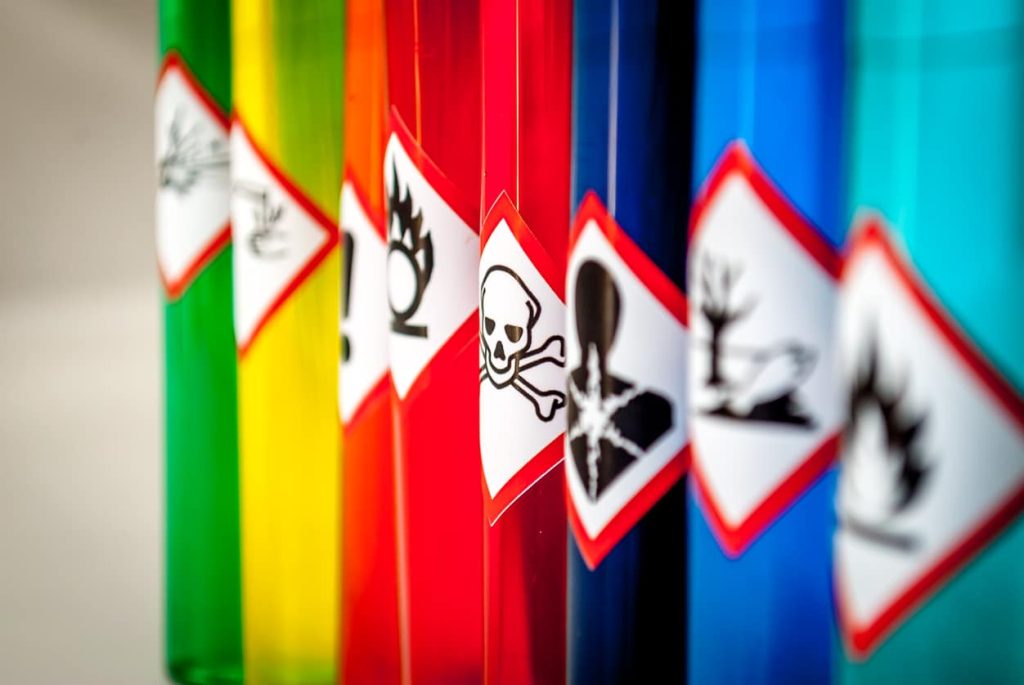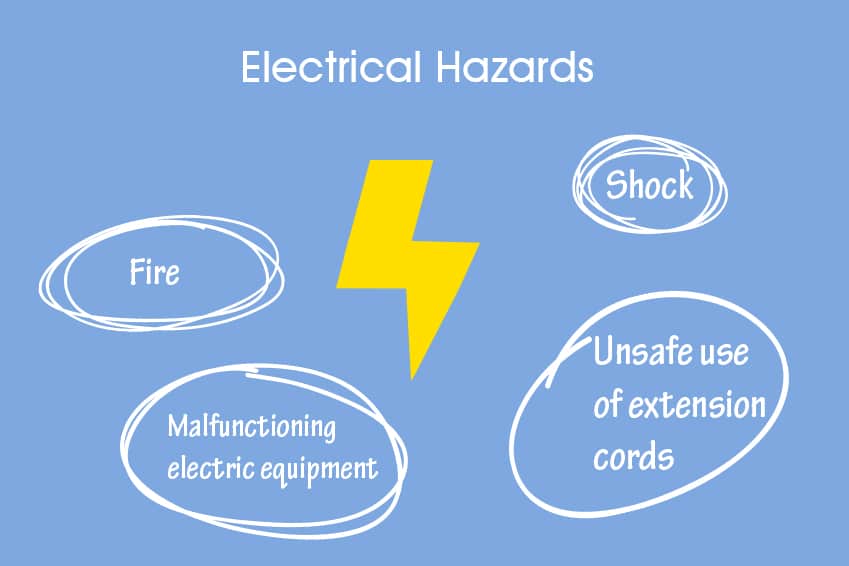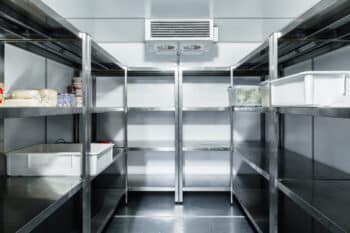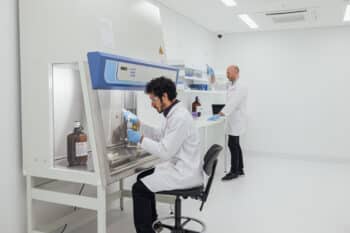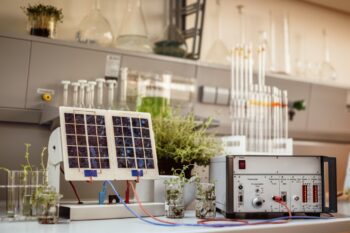Whether you’re an experienced part of a commercial research team, an aspiring scientist or a lab manager, it’s important that you are aware of the potential hazards and risks in the scientific workplace.
Many labs are more hazardous and risk-filled than the average workplace – the cost of existing on the cutting edge of the sciences. Whether you’re looking for cures, breakthroughs or new technologies, it is vital that you and the whole team understand each and every hazard of the laboratory.
With a full understanding of the hazards and risks attached to working in a laboratory, you and your team will be able to work to your fullest, combining effective research with safe practice. So, here we have listed a selection of the most common hazards and risks of the modern laboratory.
Chemical Hazards
Handling chemicals is a typical part of the day-to-day routine for many lab workers, but the risks and hazards remain the same. Many organic and inorganic chemicals are corrosive to the skin and to the eyes and can be toxic. Full safety wear should be provided to any members of the team handling chemicals, and provisions to treat any exposure or clean spillages should be present in the laboratory.

It’s not only direct contact which may be hazardous, chemical reactions which generate heat can lead to thermal burns. This further demonstrates the importance of ensuring the surface of the skin is protected from the potential for burns and exposure.
Similarly, incorrect venting within the laboratory could be hazardous. Without full and correct ventilation, a distillation or chemical reaction could lead to an explosion in the lab. Depending upon the size of the explosion and the materials affected, this could be hugely dangerous for the team and for the lab.
Inhalation of certain chemicals can be dangerous, with many of the most common solvents proving to be extremely toxic. These dangers can be immediate or slowly manifest over time – making it important that the research team are protected from the fumes produced by these hazardous chemicals.
Ingesting chemicals is a huge risk in many laboratories, due to contamination on hands, food and drink. This demonstrates the importance of safe and secure storage for all food and drink items, away from chemical exposure. Furthermore, comprehensive hand-washing and sanitation provisions should be accessible for all members of the research team exposed to hazardous chemicals.
Prevention
When it comes to chemical hazards, effective prevention is the best way to manage the risks of working with these dangerous substances. Practising proper chemical segregation is essential in all labs, as some substances can react with each other to create chemical reactions, fires and even explosions. Protective clothing and good housekeeping are also important for protecting your team from chemical hazards.
Watch the video below for more information on how to minimise chemical hazards in your lab and what to do in an emergency.
Electrical Hazards
Even the most experienced research professional can overlook basic safety principles when working with electricity – so it is vital that protective measures are employed throughout the laboratory. Particularly hazardous are electrical units which are positioned close to liquid, so these should be fitted with ground-fault circuit interrupters to break the circuit should any current flow to ground.
Electrical fires are another common laboratory hazard, which can occur when incorrect or unsafe cords and plugs are used. Any electrical appliances used in the laboratory should be fit for purpose, up-to-date and correspond to connected devices before they are implemented. Any electrical apparatus, from adaptors to cables, not safety-tested could compromise the safety of the lab and research team.
Prevention
Electrical hazards can easily be overlooked in labs, which tend to have more health and safety risks than in other workplaces. Electrical hazards are potentially life threatening, however, so minimising their risk is vital. All power outlets that could be exposed to wet conditions should be equipped with ground-fault circuit interrupters. Flexible extension cords should also be well maintained and never used as a substitute for permanent wiring. Electrical pendants can be used where possible to keep cords out of the way.
Emergency
If someone comes into contact with a live electrical source it is important not to touch them, as you could also be electrocuted. Instead turn the source off or push them clear of the source of the shock with a dry implement, such as a wooden broom handle. Your team’s trained member should administer first aid. In the case of a small electrical fire, use a multi-purpose fire extinguisher – never put water on an electrical fire.
Biological Hazards
The use of bacteria, viruses, blood, tissue and/or bodily fluids in the lab can lead to potential biological hazards. These materials can all carry disease or hazardous allergens which could put the lab team at risk. The effects of the diseases and allergens can be immediate or take significant time to manifest, demonstrating the importance that all members of the lab team are given sufficient protection, even if the dangers are not yet known.
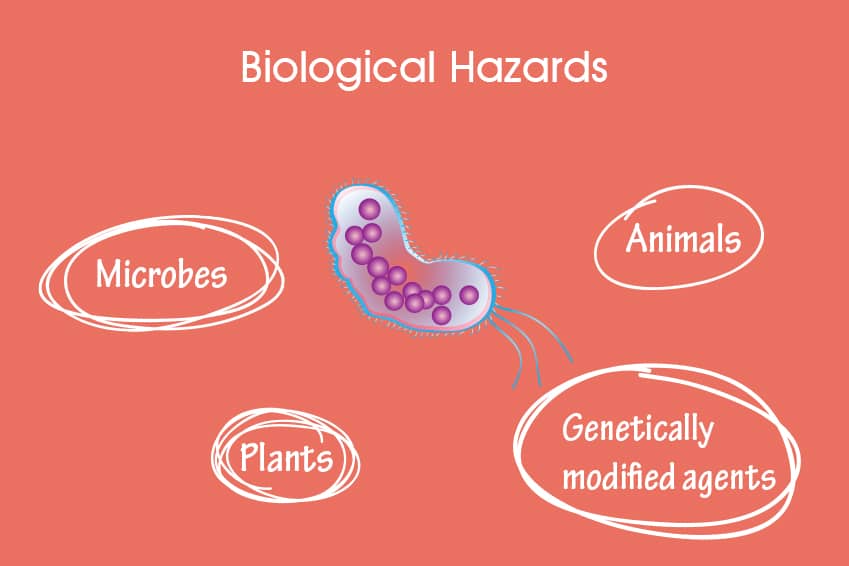
Diseases carried by humans and animals used in research can be transmitted by the team, who then may become carriers. This means that biological hazards could prove to be a massive risk for not only the lab professionals working with the materials, but anyone they come into contact with outside of work. Sometimes incredibly infectious, biological hazards (biohazards) can be amongst the biggest risks of the modern research lab, so every consideration must be made to ensure the team and the wider public are protected against contagious materials.
Prevention
Proper storage and protection is key to preventing a biological emergency in your lab. Wearing appropriate protective clothing and keeping biological agents contained in the correct areas are essential for minimising exposure to risk. Systems and procedures for safe use, handling, storage and transport of biological hazards should all be in place. Appropriate housekeeping, such as disinfecting work surfaces and properly disposing of waste, are also vital for minimising biological risk.
Emergency
Emergency procedures should be prepared in advance, and the primary objective should be to contain the biological hazard and minimise risk to people and the environment. Depending on the situation, a variety of actions may be required, such as informing others, isolating the area, evacuation, seeking assistance, preventing the spread of contamination or spills, or decontaminating the work area. First aid or medical treatment may be required in some situations.[/vc_column_text][vc_column_text]
Physical Hazards
And with so many unique risks at play in the modern lab, it can be easy to overlook the more commonplace, physical risks. Trip hazards and mishandling mistakes are rife in busy, bustling labs.
Handling is one of the major concerns for all lab managers, with members of the research team susceptible to injury if not following safe handling requirements. Hot, heavy and sharp apparatus can all compromise the health and welfare of members of the research team. This makes it important that full and correct handling equipment such as safety gloves is provided. Furthermore, training for correct lifting should be conducted so the whole team can lift and carry without fear of injury.
Slips, trips and falls are more likely to occur in the laboratory than many other workplaces due to the amount of time researchers spend on their feet and the volume of different materials present. Due care and diligence must be paid by every member of the team to reduce the presence of slip and trip hazards – to protect themselves and other members of the team. All essential and non-essential items which are stored in the laboratory must have a sufficient storage space, keeping them well out of the team’s way.
And finally, perhaps the most common of all hazards and risks in the science lab is the humble glass tube. Many an experienced lab professional has cut their finger or hand when forcing a rubber stopper into a glass tube. Whilst this will, perhaps, always occur – the risk can be reduced with continued encouragement of correct stopper replacement, using gentle pressure whilst rotating the glass tube.
Prevention
Preventing physical risk to your team in the lab can often be achieved by effective training and good housekeeping. Staff should be trained in the proper procedures for lifting, pulling and pushing, as well as the dangers of repetitive movements, and the handling requirements for different equipment. Proper housekeeping is essential for preventing slips, trips and falls in the lab, so any potential hazards should be quickly disposed of or tidied away. Also, a safety policy can help identify and protect your research team from any kind of potential hazard.
Emergency
In an emergency situation, effort should be made to contain the hazard as quickly as possible. First aid or medical assistance should be provided by an appropriately trained team member or medical professional.
Useful government resources for laboratory safety
- Biological agents: Managing the risks in laboratories and healthcare premises
- Laboratory Safety Chemical Hygiene Plan (CHP)
- REACH and Safety Data Sheets
- Globally Harmonised System (GHS)
- Laboratory Chemical Safety Summary (LCSS)
As a leading supplier of commercial laboratories, InterFocus consider all safety measures when designing, manufacturing and installing a new or updated lab, keeping your research team safe and productive. For more information about how InterFocus can help you develop a new lab for your team, visit our homepage or call our dedicated team on 01223 894833.
Graphics designed with Freepik elements: [1] [2] [3] [4] [5]

